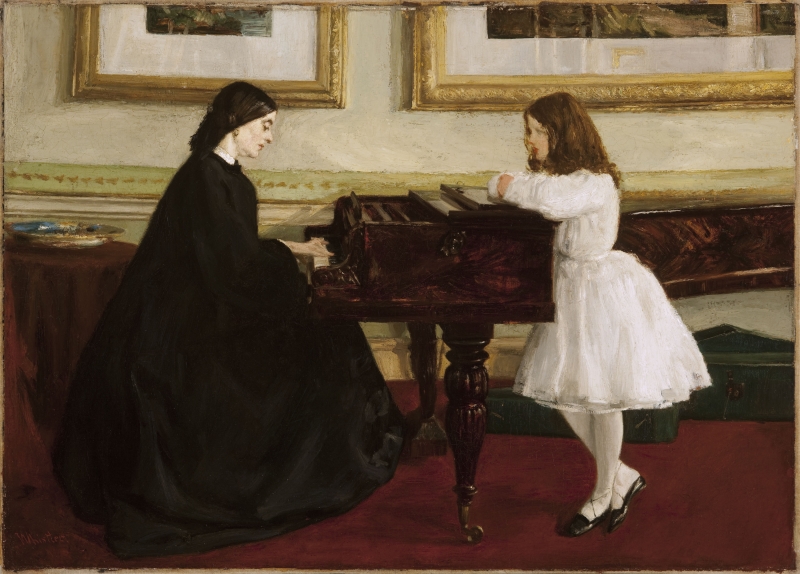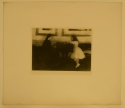Home > Catalogue > Browse > At the Piano << >>
Composition
X-rays show that a thin preparatory stage of the design was first made to include the figure at the piano, the picture frames, but perhaps not the listening girl. 1
A pencil drawing by Whistler, Annie [M.0292], shows Annie in a sailor dress leaning on a window-sill or table; it probably relates to the present painting, although it shows her facing to back right, with her face not seen.
John McClure Hamilton (1853-1936) discussed the composition with the Pennells:
'Whistler's treatment of perspective … The wainscot, behind the piano and the pictures, curves downward and Mr Hamilton was sure Whistler did this on purpose to take away from the austerity of the straight lines of the pictures above, and also because, after this gentle curving towards the centre, the lines of the wainscot lead one's eyes far into the room from either side and so express the size or space. I was particularly interested because, at the Whistler Memorial Exhibition shortly before this talk with Mr Hamilton, Humphry Ward tried to prove to me that the wainscot curved because Whistler could not draw … All the same, the curve is a mistake … it hits you and therefore the picture is not finished according to Whistler's teaching that in the finished work all traces of how it is done must be obliterated.' 2
Technique
It was painted on a light-weight good quality linen. It originally had a colourman's stencil on the verso, reading 'BROWN, 63, HIGH HOLBORN, LONDON.' The ground is a thick pure white layer containing white lead and other components, but not zinc white. The canvas was probably commercially primed. The paint may have contained varnish.
The area of paint in the part of the girl's head that overlaps the picture frame is less dense than in the part over the white wall tone. This is not the case with the seated figure. A thin white wash marking the white wall seems to have been set down, leaving a gap for the head on the left but not for that on the right. 3
Conservation History
Early photographs show that no substantial changes have occurred.
The varnish was removed, the painting was cleaned and paint losses repaired, and it was relined on a fresh canvas in 1965.
Frame
Last updated: 8th June 2021 by Margaret












